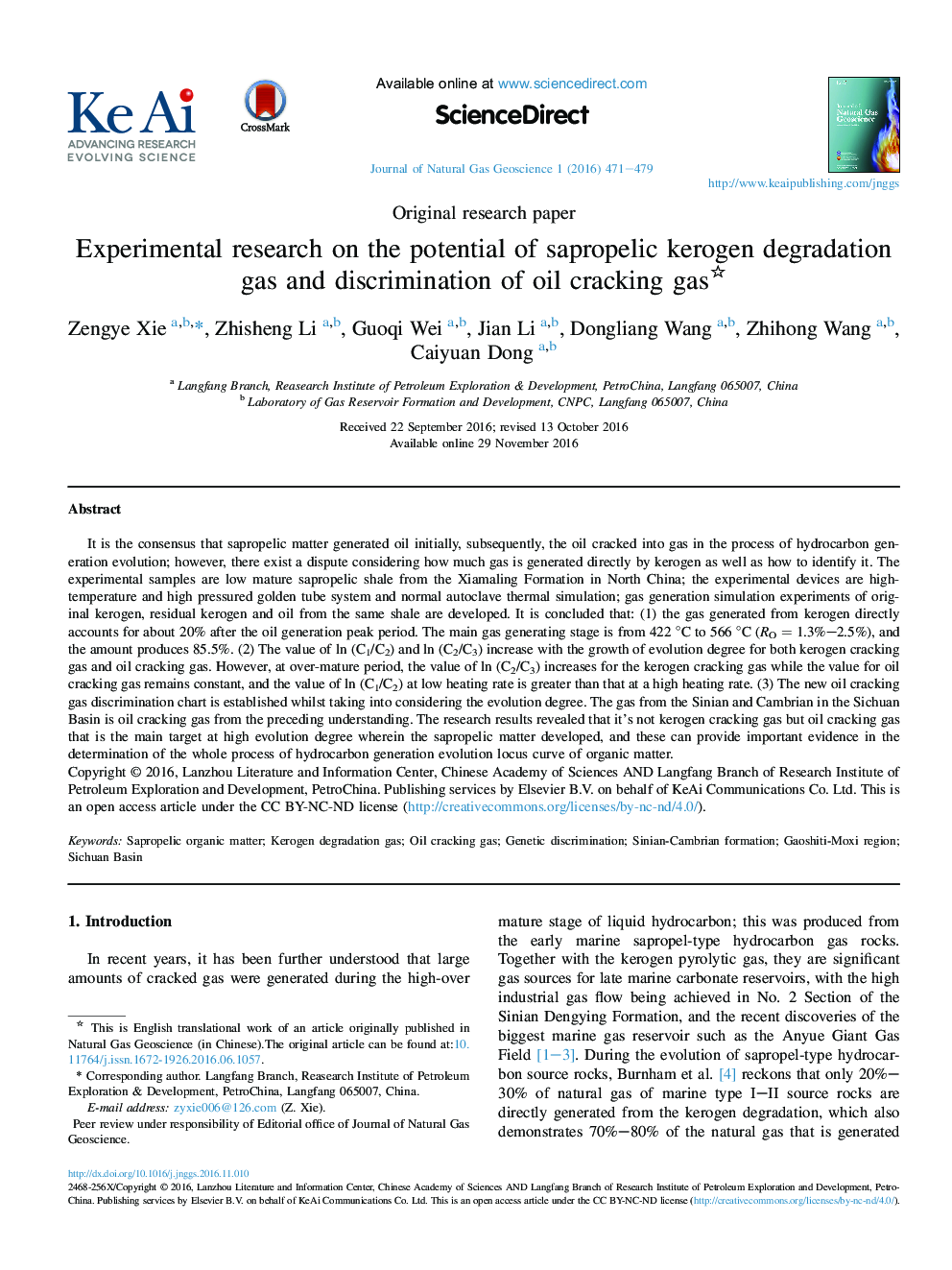| Article ID | Journal | Published Year | Pages | File Type |
|---|---|---|---|---|
| 8124242 | Journal of Natural Gas Geoscience | 2016 | 9 Pages |
Abstract
It is the consensus that sapropelic matter generated oil initially, subsequently, the oil cracked into gas in the process of hydrocarbon generation evolution; however, there exist a dispute considering how much gas is generated directly by kerogen as well as how to identify it. The experimental samples are low mature sapropelic shale from the Xiamaling Formation in North China; the experimental devices are high-temperature and high pressured golden tube system and normal autoclave thermal simulation; gas generation simulation experiments of original kerogen, residual kerogen and oil from the same shale are developed. It is concluded that: (1) the gas generated from kerogen directly accounts for about 20% after the oil generation peak period. The main gas generating stage is from 422 °C to 566 °C (RO = 1.3%-2.5%), and the amount produces 85.5%. (2) The value of ln (C1/C2) and ln (C2/C3) increase with the growth of evolution degree for both kerogen cracking gas and oil cracking gas. However, at over-mature period, the value of ln (C2/C3) increases for the kerogen cracking gas while the value for oil cracking gas remains constant, and the value of ln (C1/C2) at low heating rate is greater than that at a high heating rate. (3) The new oil cracking gas discrimination chart is established whilst taking into considering the evolution degree. The gas from the Sinian and Cambrian in the Sichuan Basin is oil cracking gas from the preceding understanding. The research results revealed that it's not kerogen cracking gas but oil cracking gas that is the main target at high evolution degree wherein the sapropelic matter developed, and these can provide important evidence in the determination of the whole process of hydrocarbon generation evolution locus curve of organic matter.
Keywords
Related Topics
Physical Sciences and Engineering
Earth and Planetary Sciences
Geochemistry and Petrology
Authors
Zengye Xie, Zhisheng Li, Guoqi Wei, Jian Li, Dongliang Wang, Zhihong Wang, Caiyuan Dong,
